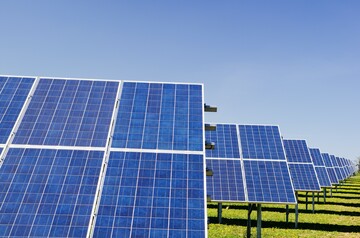How is matter different from energy?

Solar panels represent matter that transforms energy from sunlight.

Solar panels represent matter that transforms energy from sunlight.
Matter and energy are two very different things! Matter is anything that has a mass and takes up space. For example, your chair, your pencil, your desk, and you are all matter. Energy, on the other hand, is the ability to do work. Energy can be found in many different forms, such as heat, light, and electricity.
One way to understand the difference between matter and energy is to think about how they move. Matter generally moves from one place to another, while energy can be transferred and transformed from one form to another. For example, when you turn on a light switch, electrical energy is transferred into light energy, which allows you to see.
Another way to think about matter and energy is to consider their role in the universe. Matter makes up all the physical objects that we can see and touch, while energy influences how they move and interact with each other. For example, the energy from the sun drives the water cycle and allows plants to grow, which are made of matter.
It's important to understand that matter and energy are interconnected and can be changed into one another. For example, nuclear energy is released when the nucleus of an atom is split apart, which can be used to generate electricity. However, this process also involves the conversion of matter into energy.
In summary, matter and energy are two very different things. Matter refers to anything that has mass and takes up space, while energy is the ability to do work. They can be transformed and connected to each other, but they have distinct properties and roles in the universe.
What are the two types of properties of matter?
Matter has two types of properties - physical properties and chemical properties. Physical properties are characteristics that can be observed or measured without changing the substance into something new. Examples of physical properties include color, size, shape, and texture. On the other hand, chemical properties describe how matter can change into different substances through chemical reactions. An example of a chemical property is flammability, which determines if a substance can burn or not.
How does matter change its state?
Matter can exist in different states - solid, liquid, and gas. The state of matter depends on how tightly its particles are packed and how much they move. When matter is a solid, its particles are tightly packed and don't move around much. Examples of solids include ice, rocks, and toys. When matter is a liquid, its particles are loosely packed and can move around more freely. Examples of liquids include water, juice, and milk. When matter is a gas, its particles are spread out and move around very quickly. Examples of gases include air, steam, and oxygen.
Why does matter take up space?
Matter takes up space because it is made up of tiny particles called atoms and molecules. These particles are constantly moving and interacting with each other. When matter is in a solid state, the particles are packed tightly together, taking up a specific amount of space. When matter is in a liquid or gas state, the particles can move more freely but still take up space. So no matter what state matter is in, it will always take up space. For example, if you have a glass of water, it fills up the space inside the glass and you can't put anything else in that same space.

Solar panels represent matter that transforms energy from sunlight.